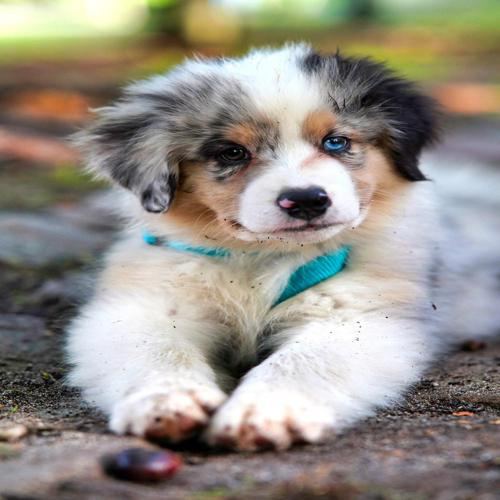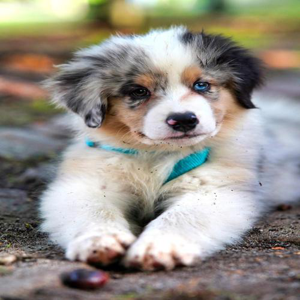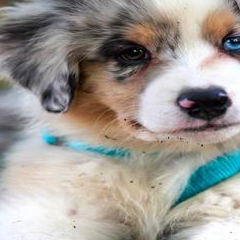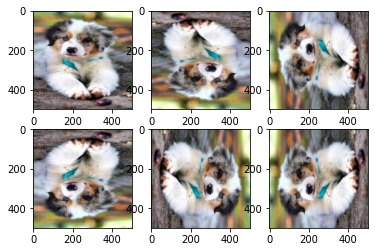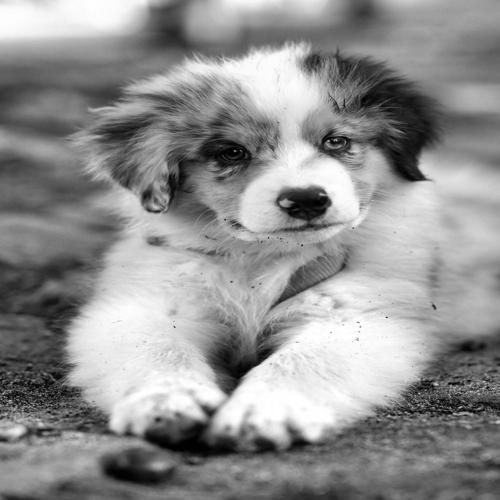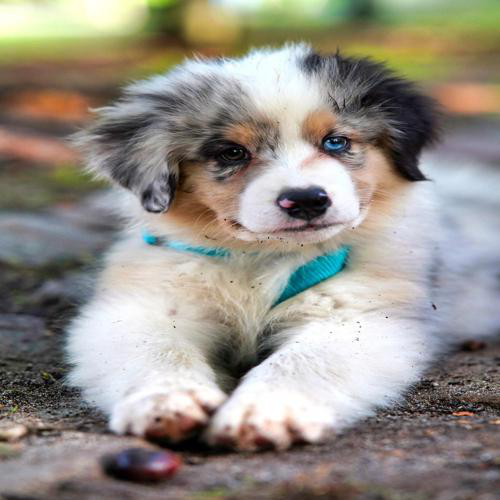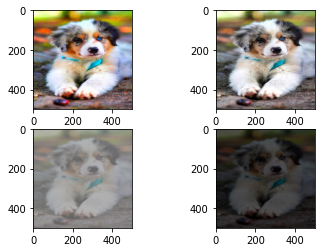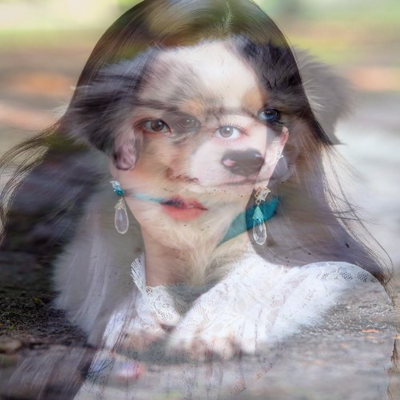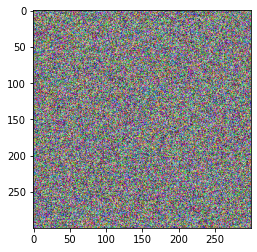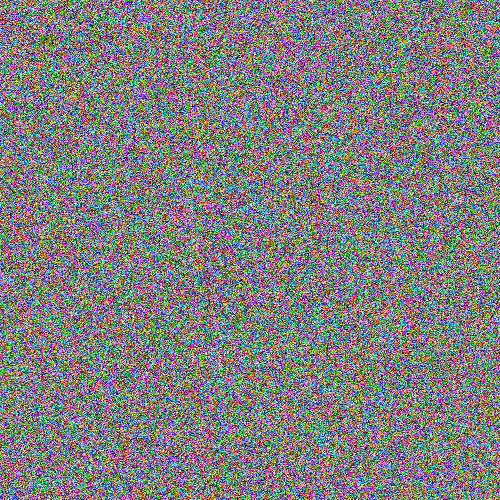PIL library installation and usage
PIL
PIL is a very popular image processing library. You can freely manipulate images into different formats.
Import relevant libs
1
2
3
4
5
6
7
8
from PIL import Image
import matplotlib.pyplot as plt
import numpy as np
import os
ROOT_DIR = './data'
def make_path(fpath):
return os.path.join(ROOT_DIR, fpath)
Open image
1
2
3
img = Image.open(make_path('puppy.jpeg'))
# img.show() # use OS image viewer
img # jupyter inline display
Save image
You can save PIL image using .save() method. Notice that you can save into different format, in this case, png format.
1
2
3
4
img = Image.open(make_path('puppy.jpeg'))
img.save(make_path('puppy2.png'))
print(os.listdir('data/'))
1
['jisoo.jpeg', 'puppy.jpeg', 'puppy2.png']
Image Information
1
2
3
4
img = Image.open(make_path('puppy.jpeg'))
print("Image format: {}".format(img.format))
print("Image size: {}".format(img.size))
print("Image mode: {}".format(img.mode))
1
2
3
Image format: JPEG
Image size: (500, 500)
Image mode: RGB
Resize
Pass a tuple to resize image.
1
2
img = Image.open(make_path('puppy.jpeg'))
img.resize((300,300))
Crop
You can crop a portion of an image using img.crop((left,upper,right,lower))
1
2
3
4
img = Image.open(make_path('puppy.jpeg'))
box = (100,100,340,340)
region = img.crop(box)
region
Transposing
You can transpose images in different ways. Each method’s name is pretty much self-explanatory. The last one TRANSPOSE is the transpose you learned in linear algebra.
1
2
3
4
5
6
7
8
9
10
11
12
13
14
15
16
17
18
19
20
21
22
23
24
25
img = Image.open(make_path('puppy.jpeg'))
img1 = img.transpose(Image.FLIP_LEFT_RIGHT)
img2 = img.transpose(Image.FLIP_TOP_BOTTOM)
img3 = img.transpose(Image.ROTATE_90)
img4 = img.transpose(Image.ROTATE_180)
img5 = img.transpose(Image.ROTATE_270)
img6 = img.transpose(Image.TRANSPOSE)
plt.subplot(2,3,1)
plt.imshow(img1)
plt.subplot(2,3,2)
plt.imshow(img2)
plt.subplot(2,3,3)
plt.imshow(img3)
plt.subplot(2,3,4)
plt.imshow(img4)
plt.subplot(2,3,5)
plt.imshow(img5)
plt.subplot(2,3,6)
plt.imshow(img6)
1
<matplotlib.image.AxesImage at 0x7feea8388040>
Convert RGB to B/W
1
2
3
4
img = Image.open(make_path('puppy.jpeg'))
img_bw = img.convert('L') # convert to b/w. What does L stand for? I don't know..
img_bw
Convert B/W to RGB
1
2
3
4
5
img = Image.open(make_path('puppy.jpeg'))
img_bw = img.convert('L')
img_rgb = img.convert("RGB") # convert to RGB
img_rgb
Image Enhancements
You can enhance image in different ways using ImageEnhance. Notice that >1 is enhancement and <1 is degradation.
1
2
3
4
5
6
7
8
9
10
11
12
13
14
15
16
17
18
19
from PIL import ImageEnhance
img = Image.open(make_path('puppy.jpeg'))
img1 = ImageEnhance.Color(img).enhance(2.0)
img2 = ImageEnhance.Sharpness(img).enhance(2.0)
img3 = ImageEnhance.Contrast(img).enhance(0.3)
img4 = ImageEnhance.Brightness(img).enhance(0.3)
plt.subplot(2,2,1)
plt.imshow(img1)
plt.subplot(2,2,2)
plt.imshow(img2)
plt.subplot(2,2,3)
plt.imshow(img3)
plt.subplot(2,2,4)
plt.imshow(img4)
1
<matplotlib.image.AxesImage at 0x7feea3de38e0>
Alplha Blending
You can easily blend two images with Image.blend(img1,img2,alpha). However, there’re two conditions.
- Both images must have the same size
- Both images must be in
.pngformat that has alpha channel
For alpha parameter, closer to 0 indicates higher percentage of img1 and closer to 1 indicates higher percentage of img2.
1
2
3
4
5
6
7
8
img1 = Image.open(make_path('puppy2.png'))
img2 = Image.open(make_path('jisso.png'))
img1 = img1.resize((400,400))
img2 = img2.resize((400,400))
blended = Image.blend(img1, img2, 0.5)
blended
Convert PIL to Numpy
You can easily convert a PIL image to numpy array. Notice that the RGB channel is in the last dimension.
1
2
3
img = Image.open(make_path('puppy.jpeg'))
img_np = np.array(img)
print(img_np.shape)
1
(500, 500, 3)
Convert Numpy to PIL
Numpy array must have channel in the last dimension to be converted to PIL.
1
2
3
4
img_np = np.random.randint(0,255, (300,300,3), dtype=np.uint8)
img_pil = Image.fromarray(img_np)
plt.imshow(img_pil)
1
<matplotlib.image.AxesImage at 0x7feea742f520>
Convert PIL to Tensor
There are two ways fo converting PIL image to tensor. transforms.PILToTensor() transforms an PIL image to tensor keeping the actual values 0~255. On the other hand, transforms.ToTensor() transforms an PIL image to tensor squashing values to [0,1].
Notice that the channel is in the first dimension unlike PIL.
transforms.PILToTensor()
1
2
3
4
5
6
7
from torchvision import transforms
img = Image.open(make_path('puppy.jpeg'))
img_tensor = transforms.PILToTensor()(img)
print(img_tensor.shape)
img_tensor
1
2
3
4
5
6
7
8
9
10
11
12
13
14
15
16
17
18
19
20
21
22
23
24
25
26
27
28
29
torch.Size([3, 500, 500])
tensor([[[213, 214, 216, ..., 124, 123, 123],
[215, 216, 218, ..., 126, 126, 125],
[220, 221, 222, ..., 129, 128, 128],
...,
[104, 96, 85, ..., 95, 94, 94],
[104, 97, 87, ..., 95, 94, 93],
[ 97, 92, 84, ..., 95, 94, 92]],
[[222, 223, 225, ..., 164, 163, 163],
[224, 225, 227, ..., 166, 166, 165],
[228, 229, 230, ..., 169, 168, 168],
...,
[ 98, 90, 78, ..., 90, 89, 89],
[ 98, 91, 80, ..., 90, 89, 88],
[ 91, 86, 77, ..., 90, 89, 87]],
[[155, 156, 158, ..., 104, 103, 103],
[161, 162, 164, ..., 104, 104, 103],
[171, 172, 173, ..., 106, 105, 105],
...,
[ 86, 78, 68, ..., 96, 95, 95],
[ 86, 79, 70, ..., 96, 95, 94],
[ 79, 74, 67, ..., 96, 95, 93]]], dtype=torch.uint8)
ToTensor()
1
2
3
4
5
img = Image.open(make_path('puppy.jpeg'))
img_tensor = transforms.ToTensor()(img)
print(img_tensor.shape)
img_tensor
1
2
3
4
5
6
7
8
9
10
11
12
13
14
15
16
17
18
19
20
21
22
23
24
25
26
27
28
29
torch.Size([3, 500, 500])
tensor([[[0.8353, 0.8392, 0.8471, ..., 0.4863, 0.4824, 0.4824],
[0.8431, 0.8471, 0.8549, ..., 0.4941, 0.4941, 0.4902],
[0.8627, 0.8667, 0.8706, ..., 0.5059, 0.5020, 0.5020],
...,
[0.4078, 0.3765, 0.3333, ..., 0.3725, 0.3686, 0.3686],
[0.4078, 0.3804, 0.3412, ..., 0.3725, 0.3686, 0.3647],
[0.3804, 0.3608, 0.3294, ..., 0.3725, 0.3686, 0.3608]],
[[0.8706, 0.8745, 0.8824, ..., 0.6431, 0.6392, 0.6392],
[0.8784, 0.8824, 0.8902, ..., 0.6510, 0.6510, 0.6471],
[0.8941, 0.8980, 0.9020, ..., 0.6627, 0.6588, 0.6588],
...,
[0.3843, 0.3529, 0.3059, ..., 0.3529, 0.3490, 0.3490],
[0.3843, 0.3569, 0.3137, ..., 0.3529, 0.3490, 0.3451],
[0.3569, 0.3373, 0.3020, ..., 0.3529, 0.3490, 0.3412]],
[[0.6078, 0.6118, 0.6196, ..., 0.4078, 0.4039, 0.4039],
[0.6314, 0.6353, 0.6431, ..., 0.4078, 0.4078, 0.4039],
[0.6706, 0.6745, 0.6784, ..., 0.4157, 0.4118, 0.4118],
...,
[0.3373, 0.3059, 0.2667, ..., 0.3765, 0.3725, 0.3725],
[0.3373, 0.3098, 0.2745, ..., 0.3765, 0.3725, 0.3686],
[0.3098, 0.2902, 0.2627, ..., 0.3765, 0.3725, 0.3647]]])
Convert Tensor to PIL
1
2
3
4
5
6
import torch
img_tensor = torch.randint(0,255,(3,500,500),dtype=torch.uint8)
img_pil = transforms.ToPILImage()(img_tensor)
img_pil

